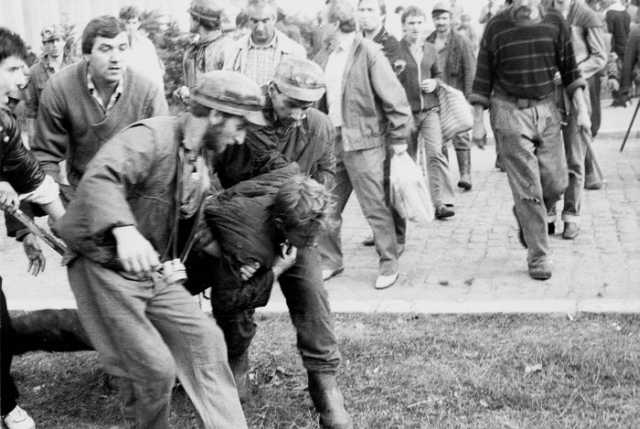The 1990 Miner’s Raids File, Back on Prosecutors’ Table
Having to comply with the ruling of the European Court of Human Rights, Romania will reopen the June 1990 miners raids file.

Bogdan Matei, 10.03.2015, 13:52
When we expected it the least, at the request of the General Prosecutor’s Office, the Bucharest High Court of Cassation and Justice opened the miners’ raids file on Monday. Prosecutors can now resume investigation into crimes such as murder and crimes against peace and humanity. Those believed to have caused the miners’ brutal intervention include the former leftist president Ion Iliescu, the then chief of the Romanian Intelligence Service, Virgil Magureanu and the head of the Romanian Police, general Corneliu Diamandescu, to name just a few.
The High Court’s decision follows the ruling, last September, by the European Court of Human Rights, that investigations should be reopened. The ECHR showed the Romanian state’s obligation to do justice to the victims of crimes against humanity, regardless of how long ago they happened. The media says the miners’ raid pushed Romania on the brink of civil war. Political analysts say in turn that that was a classic case of state crackdown on its own people. On May 20, 1990, five months after the fall of Ceausescu’s communist dictatorship, one of the former ministers in the 1970s, Ion Iliescu, seen as a revolution leader, won the first free presidential election with 85% of the votes. His party, a heterogeneous mixture of genuine revolutionaries and second-hand communists had in turn won two thirds of the seats in Parliament.
In Bucharest, University Square that had been occupied, ever since April, by students and proclaimed ‘free of neo-communism’, was empty, as protesters had to comply with the result of the elections. Only several tens of hunger strikers that seemed unable to cope with the disastrous outcome of the elections were still in the square that had previously hosted tens of thousands of exuberant and peaceful people. On the night of June 13, the riot police cracked down on protesters with such disproportionate force that it evoked the violent repression during the Revolution.
It is still unclear if those who reacted the next day by engaging in street fighting against the riot police and storming the offices of the Interior Ministry and the National Television had any real connection with the Square or not. Ion Iliescu called them ‘legionnaires’, an allusion to the interwar far right movement, and, in spite of the fact that the army had already reinstated order, he called on people to come and rescue democracy, which he said was endangered. The miners in the Jiu Valley, in South-Western Romania, answered the president’s call. For only two days, on June 14 and 15, they took control of the capital city and acted as supreme authority. Time enough for them to kill at least 6 people, injure another 700 and throw 1000 people behind bars.
The miners devastated the Bucharest University building, the head offices of several parties and of several independent newspapers. In 2010, Laura Codruta Kovesi, the then general prosecutor, the current head of the National Anti-Corruption Directorate, admitted that the inquiry into the miners’ raid was one of the biggest failures in the history of the Public Ministry. Five years on, prosecutors seem to stand one more chance to shed light on that dark page in Romania’s history and do justice.






























